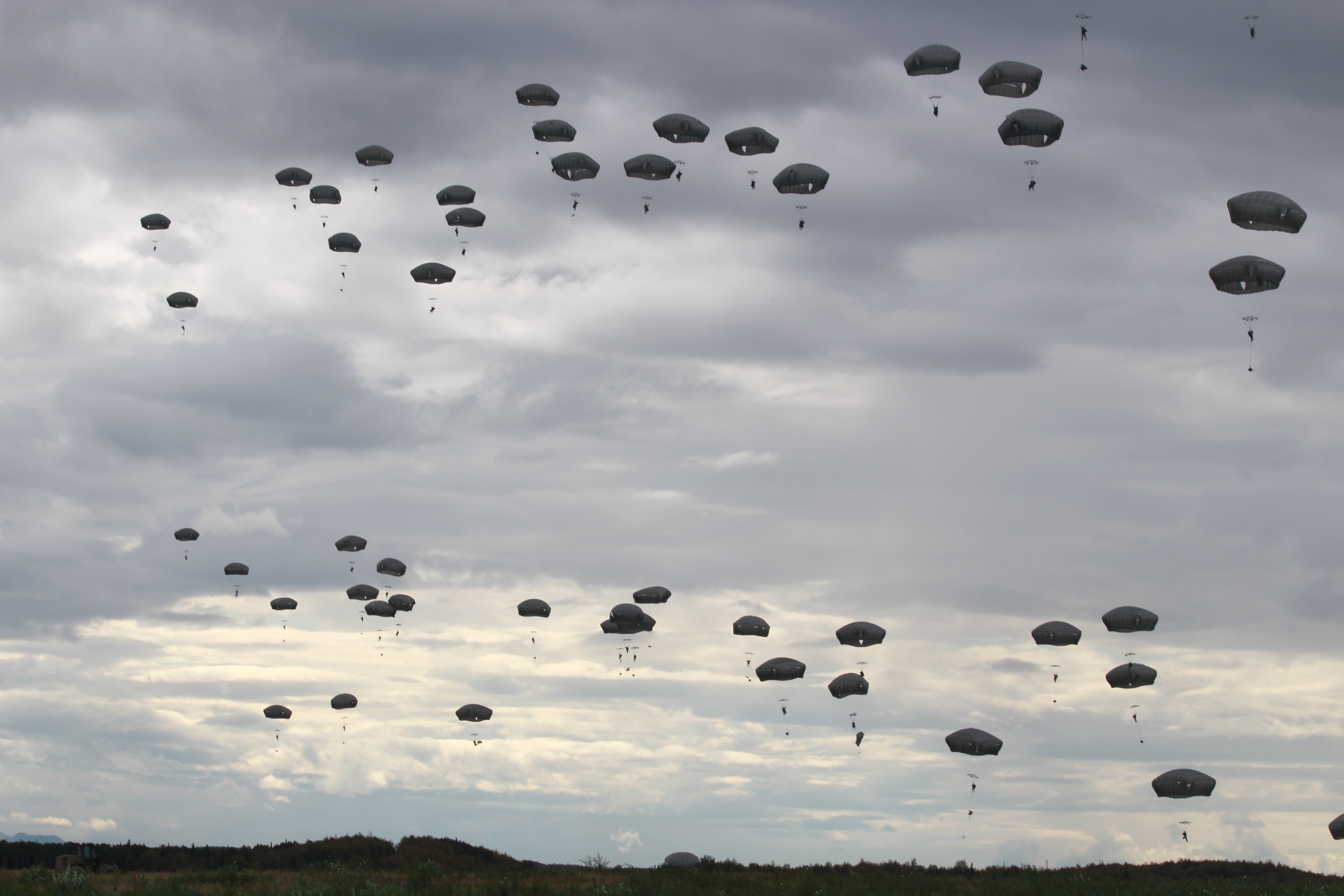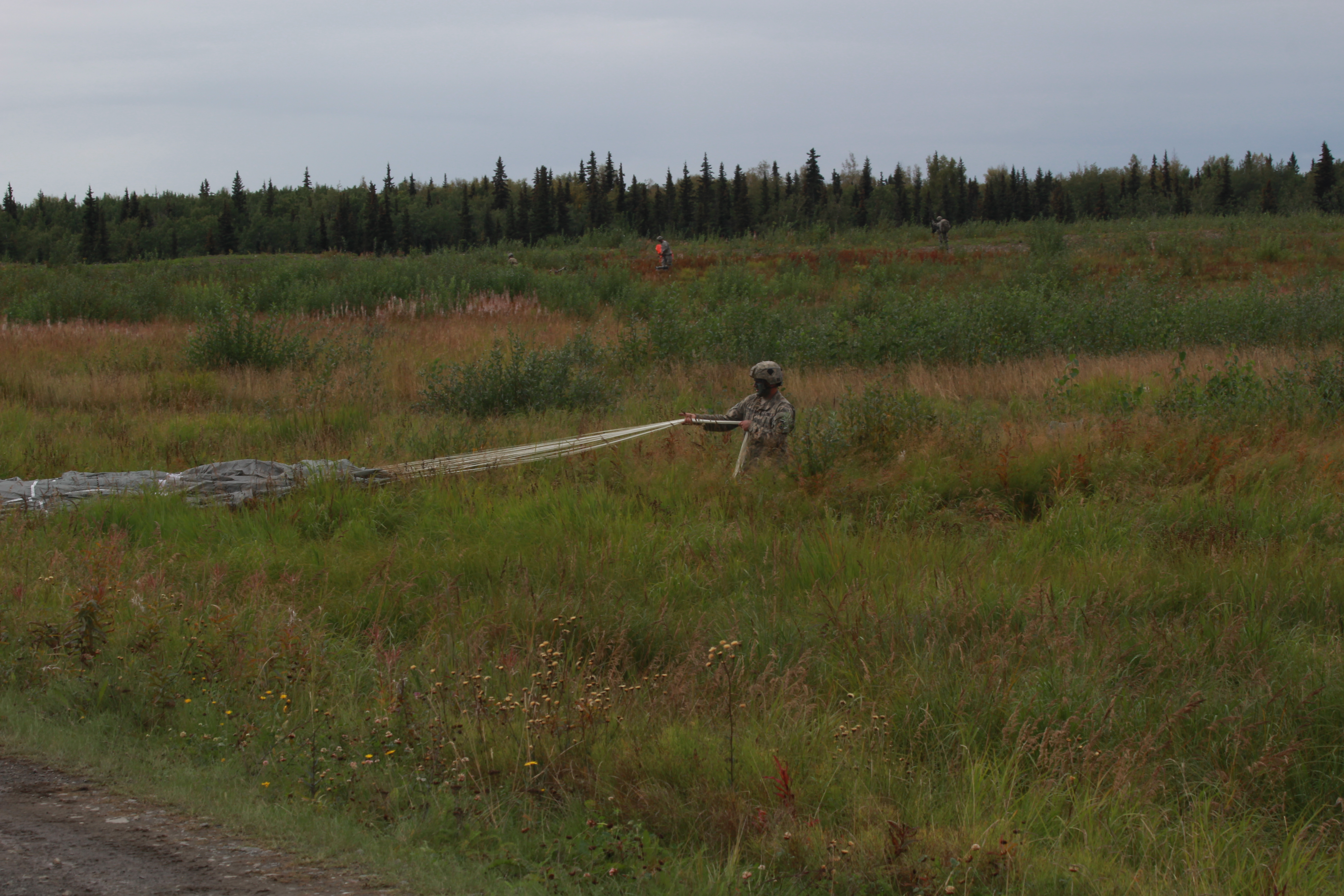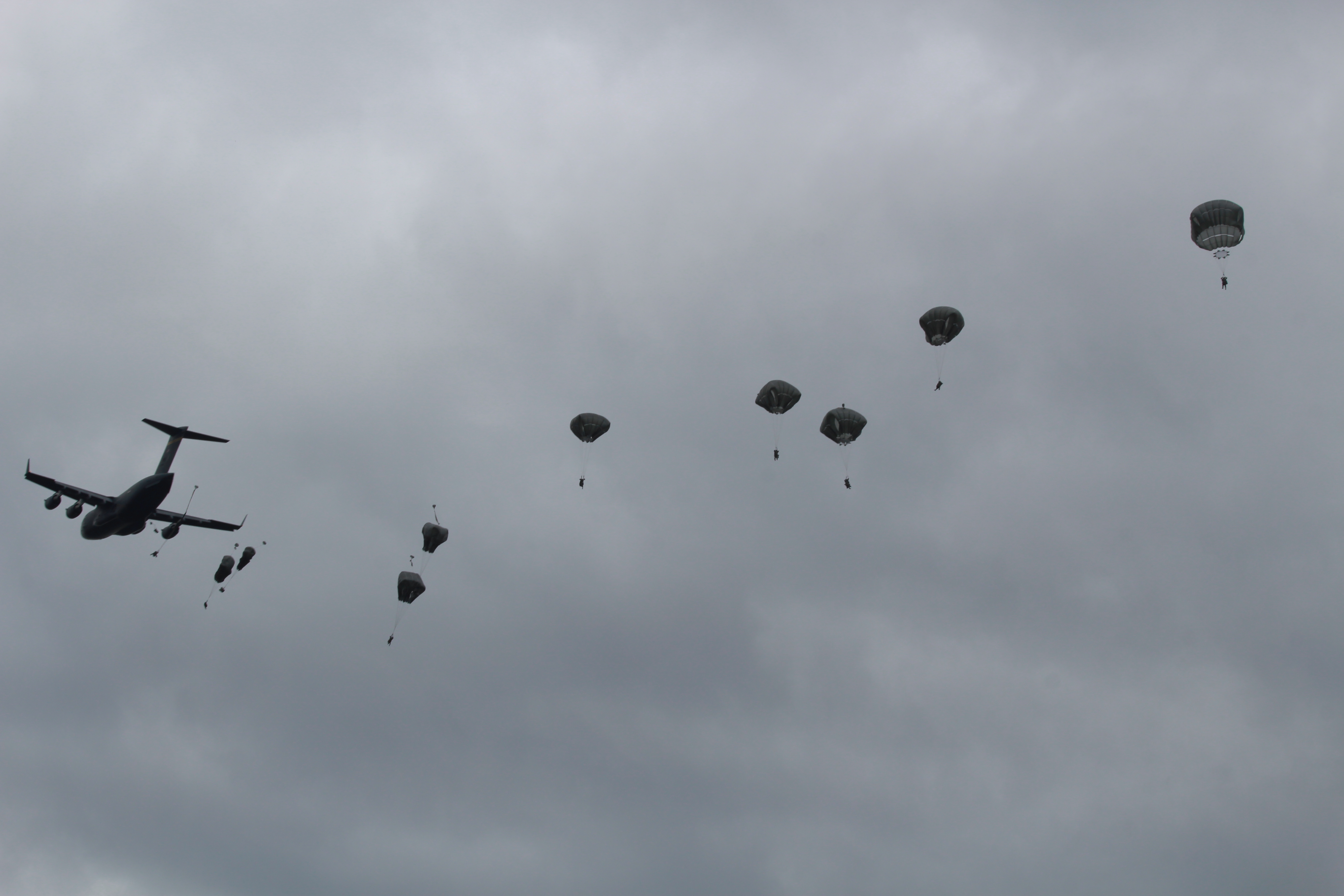Hundreds of parachutes dotted the sky near Anchorage Tuesday afternoon, as more than 450 Airborne Army paratroopers participated in a Joint Forcible Entry Exercise at Fort Richardson.

Hurtling toward Earth at 18 feet per second might not sound appealing to a lot of people but paratroopers live for it.
Major Adam Hallmark is a Public Affairs Officer and an experienced paratrooper.
“You know, there’s a lot of long days in the office, especially when you’re somebody like me who works on the brigade staff. Jumping from an aircraft in flight, makes up for all of that,” Hallmark said. “The adrenaline rush, the thoughts that are racing through your mind, when those doors raise inside the aircraft and you feel that rush of wind come inside the cabin, you know it’s about time to step out that door. It’s unexplainable, really.”

Soldiers landing in the drop zone around us aren’t simply jumping and landing. They then must pack up their parachute, grab all of their gear including a rucksack and a weapon, and proceed to a “drop off point”. Battalion Commander, Lieutenant Colonel James Uptgraft said frequent training keeps soldiers battle ready.
“Usually two to three per year is what we try to get to. But yeah, this is our bread and butter,” Uptgraft said. “This is what we bring to the fight. So yeah, it’s a big deal when we do it. A lot of planning and synchronization goes into it.”
By a lot of planning, Uptgraft means about 90 days of preparation and synchronization for one jump. Safety is a top priority for the exercise. One trooper who landed nearby got an earful from his superior for not moving fast enough to stow his gear. His parachute in a real drop could’ve blown away.
Uptgraft said soldiers carry a lot of weight on their jumps.
“The parachute now, the new T-11, is 35 pounds. I’m spit-balling that, but about 35 pounds,” Uptgraft said. “And the equipment that I had hanging down between my legs was a 60 pound rucksack. So we plan on jumpers exiting at 350 pounds including your body weight and then all the equipment.”

Even as a seasoned jumper, Hallmark looked at the troopers in awe, knowing himself the feeling of falling from the sky.
“You know, for a brief moment, all is right in the world and you’re just kind of up there doing your thing,” Hallmark said. “Then it’s back down to reality, literally.”
Hallmark said a lot of time, effort and resources are dedicated to practice for combat drops.
“Most of the jumps that we conduct are what we call “proficiency jumps.” Because being a paratrooper is a perishable skill,” Hallmark said. “If you don’t practice it, you’ll forget the things that you’ve been taught. So we have to do this on a continual basis in order to maintain our proficiency.”
Alaska is just one training area for paratroopers. Next year, Hallmark said there are plans for jumps in Australia, Indonesia and Japan.
Wesley Early covers Anchorage life and city politics for Alaska Public Media. Reach him at wearly@alaskapublic.org and follow him on X at @wesley_early. Read more about Wesley here.





